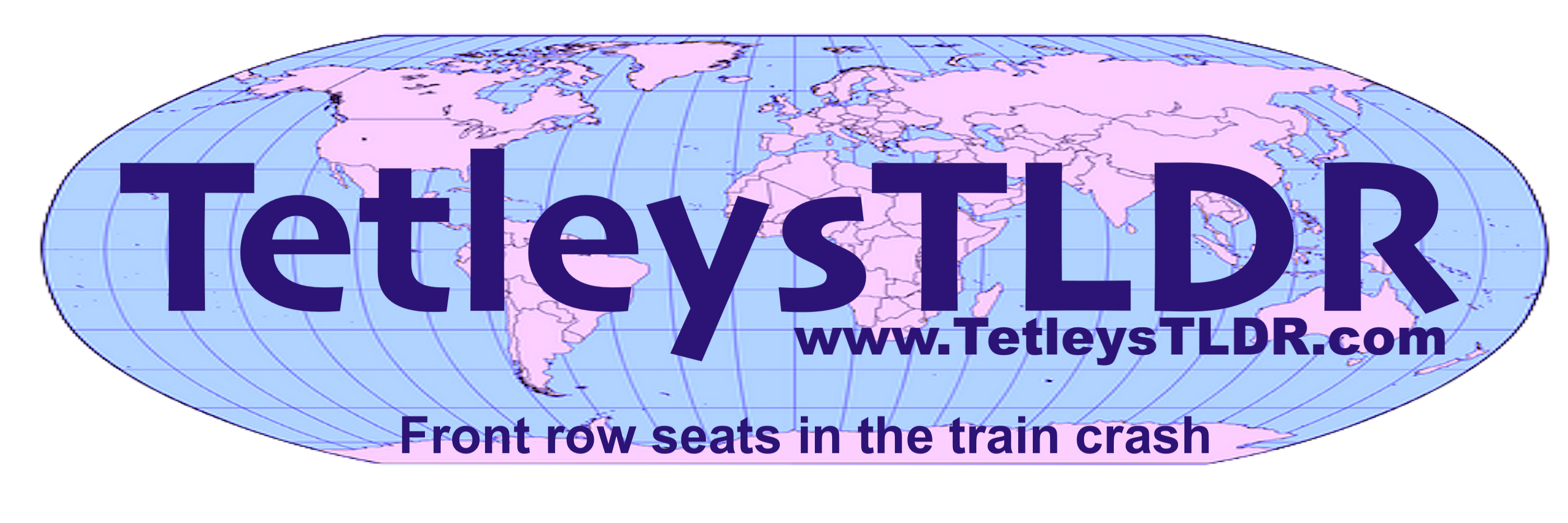The World at War
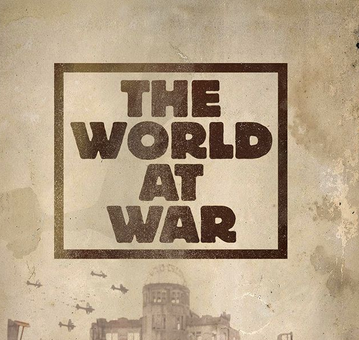
There is nothing honourable about war. Let’s face it, humanity as a species is a bit shit isn’t it? Ever since our post-Simian ancestors started fashioning tools they’ve wanted to lamp someone over the head with them. If you add to that, that as a genome, we seem to be really good at making the very worst of our species leaders. If we're aboslutely honest it’s an oven-ready recipe for a shitshow. Throughout history we have seen this play over and over again and it seems inevitable one day we'll wake up and some out of control wankstain will have started the big one - if indeed it hasn't already started. Staccato vocalled astronomer, physicist, philosopher, all-round decent chap and good mates with the Grateful Dead, Carl Sagan put it best when he said, "Humanity has amazing possibilities, it can do great things but first, it has to find a way to not destroy itself". It appears that not everyone with an orange complexion is a twat.
As the conflict in Ukraine continues to dominate headlines and diplomatic efforts to broker a ceasefire flounder, it’s easy to overlook the numerous other violent conflicts raging around the world. These wars, often underreported, claim lives, fuel displacement, and destabilise entire regions. As of March 2025, a closer look at the ongoing crises around the world shows just how widespread and complex global conflict has become. Here are some of the key theatres of war currently appening around the globe.

Yemen – A Humanitarian Crisis of Unprecedented Scale
The war in Yemen, now in its ninth year, has led to what the United Nations calls the "world's worst humanitarian crisis." The conflict between the Saudi-led coalition and Houthi rebels has displaced millions, left thousands without access to basic necessities, and triggered widespread famine. Despite efforts at peace talks, a comprehensive ceasefire remains elusive, and civilians continue to bear the brunt of this devastating war.
Syria – The War That Never Ends
The civil war in Syria, which began in 2011, has seen shifting alliances and multiple foreign interventions. Even after the overthrow of Assad, the conflict is far from over. Various groups, including Kurdish forces, remnants of ISIS, and Turkish-backed factions, continue to clash in the northeast and northwest. The impact on civilians remains catastrophic, with millions displaced both internally and across borders.
Ethiopia – Tigray and Beyond
Though the Tigray war officially ended in late 2022 with a ceasefire agreement, Ethiopia remains deeply scarred by the conflict, and tensions in the region persist. In particular, the situation in the Oromia region has deteriorated, as armed groups continue to challenge the government’s authority. The impact of the war in Tigray is still felt, with humanitarian aid slow to reach those in need and the nation’s infrastructure left in tatters.
Myanmar – A Military Coup and Ongoing Resistance
Since the 2021 military coup, Myanmar has been embroiled in a brutal civil war. The military junta, which ousted the democratically elected government, faces ongoing resistance from ethnic armed groups and pro-democracy factions. Thousands have died in clashes, and the country’s economy has collapsed. The international community remains divided on how to respond, with sanctions and condemnation largely ineffective.
Afghanistan – A Country in Continued Chaos
Following the US withdrawal in 2021, Afghanistan’s Taliban regime has faced multiple challenges, both from within and without. Various resistance groups, including the remnants of the former Afghan military and ISIS-K, continue to engage in violent campaigns. The lack of a coherent state structure, coupled with ongoing poverty and repression, has left Afghanistan in a perpetual state of crisis.
Israel/Palestine – An Escalating Struggle for Peace
Where the fuck do we even start with this? The Israel-Palestine conflict remains one of the world’s most intractable issues. Despite numerous ceasefire agreements over the years, violence continues to erupt in Gaza and the West Bank. Israeli military operations and Palestinian militant actions cycle endlessly, while diplomatic efforts are frequently derailed by political deadlock. The situation remains dire, with both sides suffering heavy casualties, and the prospects for a lasting peace seem ever more remote.
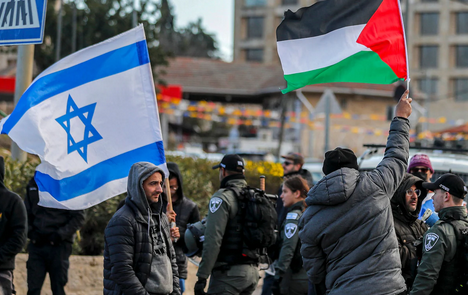
The Sahel – A Region in Turmoil
In the Sahel region of Africa, violence linked to jihadist groups such as al-Qaeda and ISIS has spread across several countries, including Mali, Burkina Faso, and Niger. The instability has created a vacuum in which armed groups, regional militias, and criminal enterprises thrive. Despite a heavy French military presence, the region remains in chaos, with a growing humanitarian crisis exacerbated by food insecurity and mass displacement.
South Sudan – A Fragile Peace
South Sudan, which gained independence in 2011, has been embroiled in civil war since 2013. Although a peace agreement was signed in 2018, sporadic violence continues to plague the country. Ethnic militias and political factions continue to clash, and the government’s capacity to maintain control is weak. South Sudan remains one of the poorest and most unstable nations in the world.
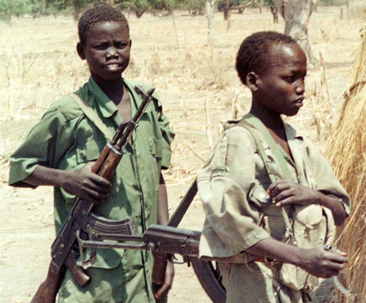
The Philippines – A Longstanding Insurgency
In the Philippines, an insurgency led by communist rebels has been ongoing for decades. Despite peace negotiations, the conflict remains unresolved, with periodic flare-ups of violence in rural areas. The government has faced increasing challenges from other armed groups, such as the Abu Sayyaf Group and Islamist factions, who have carried out kidnappings and bombings in the southern islands.
DR Congo – A Battle for Control of Resources
The Democratic Republic of Congo remains in a state of perpetual conflict, driven by competition over the country’s vast mineral wealth. Rebel groups, militia forces, and regional powers continue to fight over resources in the east of the country, displacing millions. The government is unable to control large parts of the country, and humanitarian organisations face enormous challenges in providing aid to those affected by the violence.
Chad – A Country in Crisis
Chad has been embroiled in conflict since the death of President Idriss Déby in 2021, with both armed rebel groups and factions within the military seeking control of the country. The region has been destabilised by the insurgency, as the government grapples with internal challenges while dealing with regional pressures from Sudanese and Libyan factions. The conflict has further destabilised the Sahel, already under threat from jihadist violence.
Nigeria – Boko Haram and the Insurgency in the Northeast
Nigeria’s northeastern region remains in the grip of the brutal Boko Haram insurgency, which has terrorised local populations with bombings, kidnappings, and attacks on military forces. Despite military efforts to combat the group, it continues to operate with impunity, and violence in the region shows no sign of abating. Additionally, tensions between the government and various ethnic militias, particularly in the south and middle-belt, have added to the country’s instability.
The Kurdish War – A Struggle for Autonomy
The ongoing Kurdish struggle for greater autonomy remains a significant conflict in the Middle East. Kurdish fighters continue to clash with Turkish forces in the southeast of the country, while Kurdish groups in Syria and Iraq are similarly involved in tensions with local governments and ISIS remnants. In particular, the situation in Syria, where Kurdish militias are involved in both fighting ISIS and confronting Turkish-backed forces, remains tense, with many civilians caught in the crossfire.
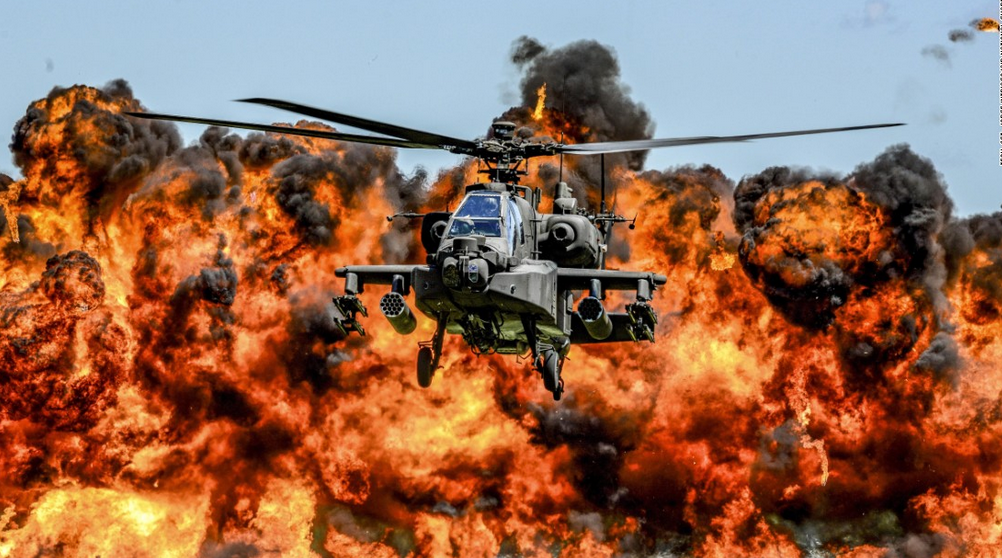
Insurgencies in Tibet and Central Asia
In Tibet, continued resistance to Chinese control remains an ongoing issue, with sporadic protests and uprisings challenging Beijing's rule. The government’s repression of Tibetan culture, religion, and autonomy fuels discontent, despite the heavy presence of Chinese military forces. Similarly, Central Asia has seen rising unrest, particularly in places like Kazakhstan and Kyrgyzstan, where local insurgents demand greater independence from central government control.
Georgia – A Fragile State Facing Russian Encroachment
Georgia, particularly the regions of South Ossetia and Abkhazia, remains a flashpoint for conflict, with Russia maintaining a strong military presence in areas that have declared independence from Georgia. Tensions flare regularly, and any move toward Georgia’s potential NATO membership is met with strong opposition from Russia, which sees its influence in the Caucasus at risk. Georgian forces continue to engage with separatists, and the situation remains volatile.
South America – A Legacy of Political Insurgencies
Across South America, the shadow of political insurgency lingers in countries like Colombia and Venezuela. In Colombia, smaller guerilla groups continue to contest government control over rural areas, despite peace deals with the FARC. Meanwhile, Venezuela’s internal strife, exacerbated by political and economic collapse, has sparked violent protests and insurgent activity from opposition groups seeking to overthrow the Maduro regime.
Siberia – Emerging Insurgencies in the East
In Siberia, there are growing signs of unrest as indigenous and separatist movements gain traction. Tensions over Russian state policies, resource extraction, and ecological destruction are leading to sporadic resistance from local groups. Some Siberian activists are calling for greater autonomy or independence from Moscow, while others are pushing back against large-scale industrial projects that threaten the environment and local way of life. The Russian government's tightening grip on these regions has sparked an insurgency, particularly among indigenous populations, who see their lands and culture at risk.
Armenia – A Rising Threat of Insurgency
The situation in Armenia remains tense, particularly after the 2020 Nagorno-Karabakh war with Azerbaijan. While a ceasefire was reached, tensions with Azerbaijan persist, and some factions within Armenia are pushing for more aggressive action to reclaim territory or challenge the government’s concessions. In the midst of this, small insurgent groups have started to emerge, advocating for a more hardline stance against Azerbaijan and greater national sovereignty.
The Caucasus – Growing Regional Instability
Across the Caucasus region, instability is on the rise. The unresolved tensions between Armenia and Azerbaijan over Nagorno-Karabakh continue to simmer, but now new insurgencies are cropping up in Georgia’s breakaway regions, as well as in the Dagestan area of Russia. Regional autonomy movements are gaining momentum, and the local population, often ethnically distinct from the central powers, is increasingly turning to armed resistance.
Rwanda
Rwanda, remember that country we were going to see people to because it was a nice safe place? though a country associated with its horrific 1994 genocide, is currently facing fresh violence, especially in the western part of the country. The government in Kigali has long been accused of engaging in military operations in the neighbouring Democratic Republic of Congo (DRC), particularly targeting rebel groups such as the M23 movement. The M23, primarily composed of ethnic Tutsis, has been fighting the DRC's government, often accusing it of failing to protect Tutsi minorities in the region. These tensions, however, are not only about ethnic divisions but also the control of vast mineral resources, with multinational interests complicating any possible peace process.
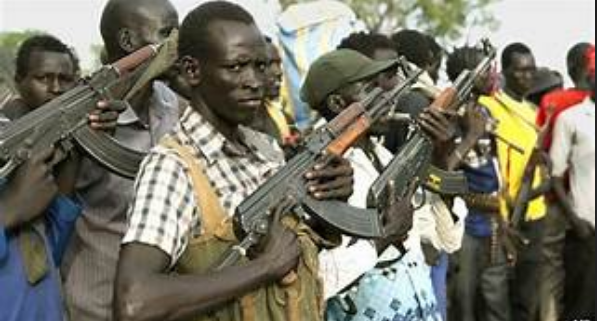
Peru
In Peru, social unrest, often escalating into violent clashes, has been present for decades, but the recent political crisis has ignited a new wave of conflict. After the impeachment of President Pedro Castillo in December 2022, protests and strikes erupted, particularly in rural areas, where the government’s presence is minimal. Violent confrontations between protesters and security forces have claimed many lives. Alongside these disturbances, the long-running insurgency of the Shining Path, a Maoist guerrilla group, continues to launch attacks in remote regions, further destabilising the nation.
Kashmir
Kashmir is another enduring conflict that shows little sign of resolution. The region, claimed by both India and Pakistan, has been the site of numerous skirmishes, terrorist attacks, and military incursions since the partition of India in 1947. In recent years, the Indian government has taken a more aggressive stance, particularly after the revocation of Jammu and Kashmir’s special status in 2019. This move sparked widespread unrest, and armed insurgents continue to target Indian forces, while the local civilian population is often caught in the crossfire. International pressure for a peaceful resolution has been consistent but ineffective, and the violence persists.
Nepal
Nepal, while largely peaceful today following the end of a decade-long Maoist insurgency in 2006, still faces occasional outbreaks of violence. The Maoists, who fought a brutal civil war against the monarchy and later entered the political mainstream, remain influential. However, political instability and sporadic protests, particularly around issues of federalism and ethnic autonomy, occasionally flare up into violent confrontations. Additionally, tensions between the various ethnic and political groups in the Terai region, particularly along the southern border with India, can also lead to violent outbreaks, making the situation fragile.
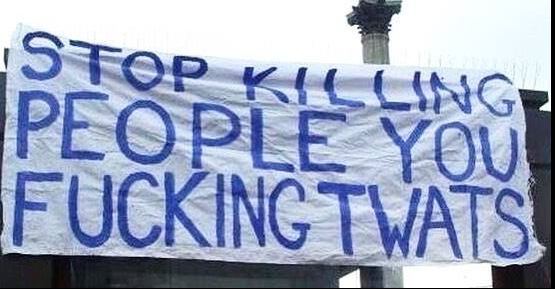
And I haven't even mentioned separatists in places like Transnistria and Serbia, The Basque country or Ireland. Or Mauritania or Spanish Sahara, or insurgencies in Central America . Nor have we even skirted around the shitehouse in the whitehouse who seems hell bent on alienating his allies and stealing sovereign land. There are also numerous insurgencies and terrorist activities that, while not officially classified as ‘wars’, continue to terrorise populations and destabilise regions. If you add to this that we imminently expect a war between the Koreas, possibly involving Japan and of course China and Taiwan are on a knife edge. While Ukraine and Gaza dominate much of the global conversation, it is important to recognise the many other conflicts that continue to affect millions across the globe.
None of this, and perhaps all of this, even skirts on the invovlement in global wars by the superpowers and us. Our hands are far from clean. All the US wars over the petrodollar or regime change that we've slavishly gone along with. Our Empire, like every other empire in history, was built on a foundation of death, conquest and exploitation. The right look back at Empire with fondness, the left look back at it with shame.
These wars and insurgencies may not always make the front pages, but they leave deep scars on the populations involved, and their complexities are often tied to issues of colonialism, ethnic division, and resources. And of course, where there is war, there is someone making money – Enter, left stage cunts like BlackRock.
In an interconnected world, focusing only on one conflict risks neglecting the broader patterns of violence and instability that affect the most vulnerable communities. The path to peace is long, and the international community must not forget the ongoing struggles of these people. If there is a future for the planet – if there is a future for humanity - instead of encouraging the bastards that lead countries into wars, we need to be putting them behind bars. These people aren’t statesmen, they are profiteers. They are a cancer on humanity. The world is a wonderful place, and we have so much potential. We need to respect it and stop the shitmuppetary that could end our species and everything else in a few minutes.
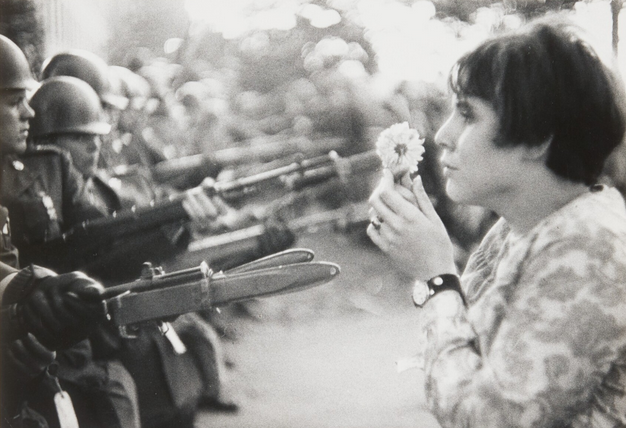
We are in a twisted world where the advocates of peace are seen as fringe wierdo's, so much so that the renowned pacifict, Jeremy Corby was screamed at on a TV debate by members of the audience because he would have an issue about pressing the button and killing millions if he was Prime Minister - of course that's not at all what he said but the gammon response was horrific.
For most of my life, these wars were polarised into West and East but now the wars are interconneted but fragmented. Where they were based on how you alligned yourself to Communism or Capitalism, they are now based on rabid nationalism, religious fundamentalism, Chinese expansion especially in Africa, management of narcotics, sovereign expansion and plain old bloody minded greed and avarice. In the case of Israel and it's protagonists it is ethno-nationalism mixed with a toxic cocktail of biblical bullshit.
One thing has remained true though, no one truly wins a war except the arms dealers. There is money to be made by being the peddlars of death. It's an expanding business.
As the bard once said War! What is it good for? Absolutely nothing?
Say it again!
The world has gone mad. If you enjoyed reading this, please feel free to look at the rest of the blogs on www.TetleysTLDR.com. They're free to view, there's no paywall, they aren't monetised and I won't ask you to buy me a coffee. Just a leftie, standing in front of another leftie, asking to be read. All the best, Tetley
